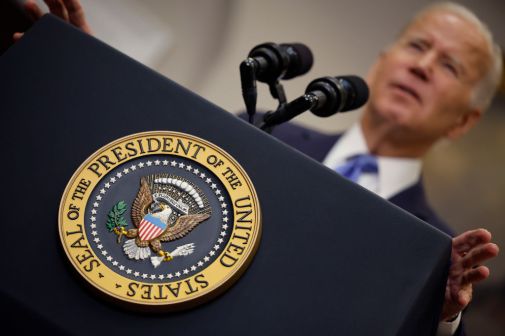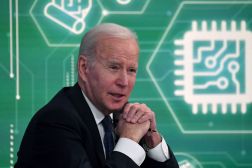 Photo: Scout Tufankjian/Obama for America
Photo: Scout Tufankjian/Obama for AmericaWith President Barack Obama regaining the White House, there is a distinct direction in the way the government thinks about the use of technology, and Tuesday’s results will have long-ranging effects on the federal information technology community.
The Obama administration has made great strides in the way it’s brought technological advances to government. The message since the early days of the administration and the anointing of Vivek Kundra as the first federal chief information officer and Aneesh Chopra as chief technology officer has been in many ways simple: if the public has it, so should government.
That’s created a new era of technology within government with the increased use of mobile devices, cloud computing technologies, open source software and an emphasis on social media to reach the country’s citizens.
“There’s a huge divide between the consumer space and the public sector. Why? The reason is that in government there isn’t a Darwinian pressure to innovate that’s in the consumer space. Consumer companies are one click away from extinction, so they have to innovate constantly,” Kundra said in an interview in 2011 with CNN. “Yet, in enterprise IT, which is far inferior to consumer IT, victory is considered winning that contract. Once companies win that contract, the incentives are to optimize their margins, not to innovate or make sure they’re providing better services.”
He continued, “You address that problem by adopting consumer technologies. Why are we even in the business of giving mobile devices at an enterprise level? Let all government employees go out there, pick whatever mobile device they want, and let competition decide which is a better technology, instead of having some random bureaucrat setting a standard for millions of people.”
The Obama administration has also pushed to alter the procurement cycle so federal agencies can get technologies in their hands before they become outdated.
While IT spending has remained even since Obama took office, the focus on innovation, doing more with less, has risen.
“We flattened IT spending and innovated more in the past three years,” U.S. CIO Steven VanRoekel said during the release of the budget.
The flatline in overall spend, though, has not been a reduction in the use of technology, but instead has become a catalyst for change. Instead of funding large proprietary information systems that can cost in the hundreds of millions or billions of dollars, federal agencies are turning toward more efficient solutions like cloud computing and increasing the use of shared services.
VanRoekel has urged federal agencies to take a cut and invest approach, finding the money they need for new technology investments in existing programs that are out of date or are no longer cost effective.
“The mentality of let’s cut the bottom of our list off, the things that are least effective or are duplicative and let’s take part of that and feed the top of the list so we can invest in innovation, so we can invest in cost savings, efficiencies and effectiveness of our employees or services that touch citizens, is there,” VanRoekel has said.
The Office of Management and Budget also started more closely monitoring the technology spend with programs like TechStat and PortfolioStat to help federal agencies keep technology costs from increasing, but also being accelerants for helping the government become more efficient.
“Our challenge isn’t to immediately cut costs, but change the culture of IT investments to prevent these types of investments in the future,” Kundra said during testimony before a House committee in April 2011.
So the question now is what will the next four years look like?
There are still a number of federal IT challenges ahead, but this administration has shown it will face them with innovation, intellect and a forward-thinking approach.
“We have to realize that in today’s global, competitive economy, the best jobs and newest industries will take root in the countries with the most skilled workers, the strongest commitment to research and technology, and the fastest ways to move people, goods, and information,” Obama has said. “To win the future, America needs to out-educate, out-innovate, and out-build the rest of the world.”
Obama now has four more years to lead America, and the federal government, on the path to innovation.






